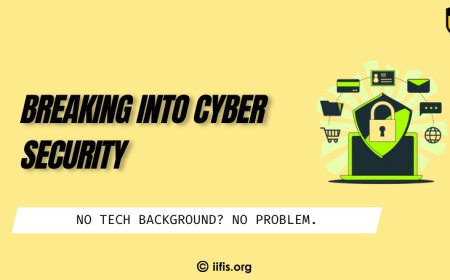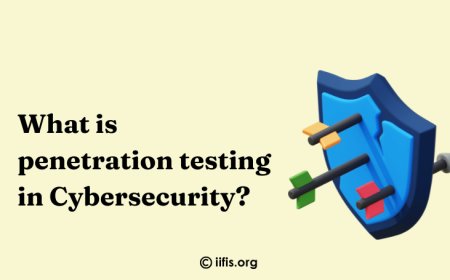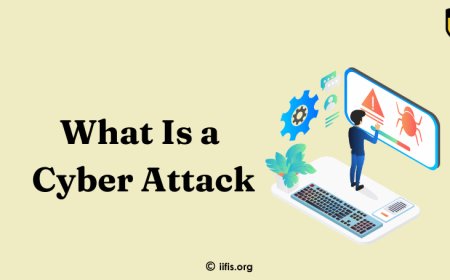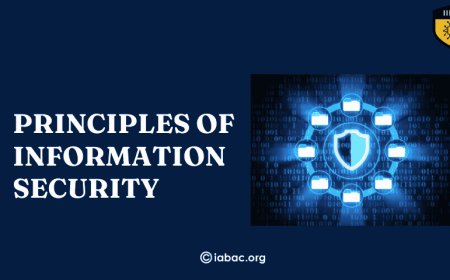A Guide to Effective Information Security Models and Practices
Explore essential information security models and practices to safeguard your data, maintain compliance, and build trust, along with valuable tips on certifications.
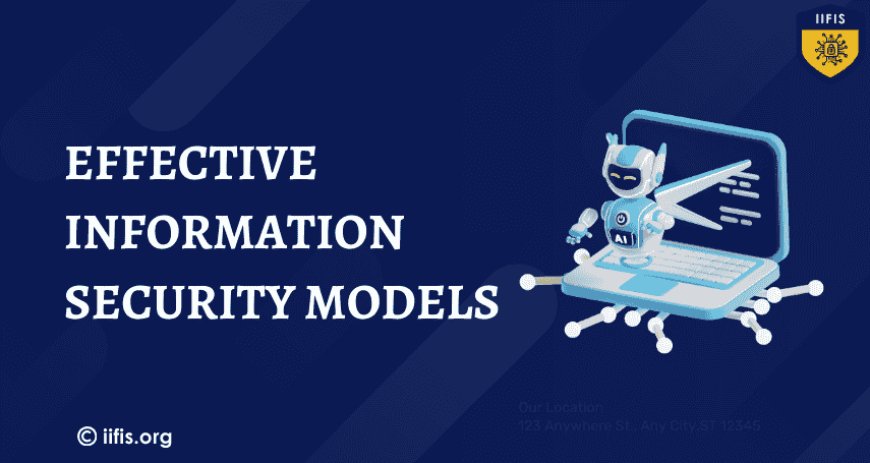
Nowadays, all personal and business information is shared and stored online. I’ve learned how important information security is. I’ve seen how easily organizations can be vulnerable to cyberattacks and data breaches if they don’t have a strong security plan in place. Whether it's protecting customer data or intellectual property, using models like the CIA Triad and Zero Trust has been key to keeping data safe. I also discovered that certifications like CISP and CISM have been crucial for building my knowledge and skills, helping me stay updated and secure systems more effectively. Information security is essential not just for protecting data but for building trust and ensuring business continuity in a digital world.
What is information security?
In my experience, information security is more than just using tools like firewalls or encryption; it’s about having a complete approach to protect sensitive data. Early on, I saw how serious the consequences of data breaches and cyberattacks can be. They don’t just cause technical issues—they can lead to financial loss, harm a company’s reputation, and result in legal problems.
I’ve learned that it’s important to have different layers of protection—physical security for data centres, technical solutions like encryption, and strong policies that guide how employees handle data. The most important thing I’ve realized is that security isn’t just about the tools or systems in place. It’s about creating a culture where everyone takes responsibility for keeping information safe. A good security plan ensures that sensitive data stays secure, accurate, and accessible to those who need it.
Information security addresses three key principles, often referred to as the CIA Triad:
-
Confidentiality: Ensuring that information is only accessible to those authorized to view it.
-
Integrity: ensuring that data remains accurate, complete, and trustworthy.
-
Availability: Ensuring that data is accessible when needed.
Why is information security important?
As the world becomes more interconnected, the risks associated with cyberattacks and data breaches increase. Here are a few key reasons why information security is essential:
-
Protection Against Cyber Threats: The frequency and sophistication of cyberattacks, including hacking, phishing, malware, and ransomware, are rising. Without proper information security measures, organizations are vulnerable to these threats, which can lead to data breaches, financial loss, and reputational damage.
-
Legal and Regulatory Compliance: Many industries are governed by strict regulations regarding data protection. For example, healthcare organizations must comply with HIPAA, and businesses dealing with EU residents must adhere to GDPR. Failure to implement appropriate security measures can result in heavy fines and legal repercussions.
-
Maintaining Trust: Data breaches not only harm an organization financially but can also erode the trust customers and partners have in the company. Strong security practices are crucial for maintaining that trust and building a solid reputation.
-
Operational Continuity: Effective information security ensures the continued availability and accessibility of critical systems and data, preventing costly downtime caused by cyber incidents.
Use of Information Security Models and Practices
Information security models provide structured frameworks for designing and implementing security policies, procedures, and technologies. Some commonly used security models include:
1. The CIA Triad
This foundational model of information security emphasizes the protection of data's confidentiality, integrity, and availability. It serves as a guideline for most security measures, from encryption to access controls.
2. Zero Trust Model
The Zero Trust model assumes that no device or user, either inside or outside the organization, should be trusted by default. Every access request is verified continuously, and strict access controls are enforced. This model is particularly effective in environments with remote workforces or cloud-based infrastructures.
3. Risk Management Framework (RMF)
The RMF is a systematic approach to identifying, assessing, and mitigating risks associated with information security. It helps organizations make informed decisions about which security controls to implement and ensures that these controls are continuously monitored and updated.
4. The Parkerian Hexad
Building on the CIA Triad, the Parkerian Hexad adds three additional principles: possession, utility, and authenticity. These elements ensure that information is not only protected and accurate but also genuinely useful and verified.
In addition to these frameworks, several security models provide more specialized approaches to managing data security:
Bell-LaPadula Model
The Bell-LaPadula (BLP) model is primarily focused on confidentiality and enforces two key rules:
-
No, Read Up (Simple Security Property): A subject (user or process) with a lower security clearance cannot read data at a higher classification level.
-
No Write Down (*-Property): A subject with a higher security clearance cannot write data to a lower classification level.
The Bell-LaPadula model is commonly used in military and government systems, where confidentiality is paramount and the need to control information flow is strict.
Biba Model
The Biba Model focuses on data integrity, ensuring that information cannot be modified by unauthorized individuals. It enforces two main rules:
-
No Write-Up: A subject cannot write to a higher integrity level.
-
No, Read Down: A subject cannot read data from a lower integrity level.
Biba is useful in systems that prioritize data accuracy and reliability, such as in financial institutions or healthcare systems.
Clark-Wilson Model
The Clark-Wilson Model emphasizes data integrity and the enforcement of well-formed transactions. It utilizes two major components:
-
Well-formed Transactions: defined actions that ensure data consistency.
-
Separation of Duties: A control that ensures no user can perform all parts of a critical action, reducing the chance of fraud or errors.
The Clark-Wilson Model is commonly used in environments requiring strict data consistency and business process controls, such as in banking and financial systems.
Brewer-Nash Model (Cinderella Model)
The Brewer-Nash Model is designed to prevent conflicts of interest by dynamically adjusting access rights based on the user's actions or relationships. It’s often called the Cinderella Model because it “changes” access control based on what the user does, ensuring they cannot access data that would cause conflicts in their role, especially in situations like government contracting or business negotiations.
Harrison-Ruzzo-Ullman (HRU) Model
The HRU Model formalizes the idea of access control through a dynamic access control matrix, providing commands for creating, deleting, and granting access rights. It offers a way to understand and evaluate how a system dynamically manages access to resources over time, incorporating concepts of safety and liveness to ensure that the system is both secure and operational.
Need for Information Security
The need for robust information security is not only driven by external threats but also by internal factors. Here's why it is essential:
-
Preventing Data Breaches: Data breaches, which can expose personal and sensitive information, are one of the most significant concerns for businesses today. A breach can result in financial loss, regulatory penalties, and severe damage to the organization's reputation.
-
Safeguarding Privacy: With the increasing amount of personal information being collected, individuals expect their data to be handled with the utmost care. Strong security measures help ensure privacy and protect customers from identity theft or fraud.
-
Business continuity: Disruptions to IT systems due to cyberattacks can severely affect an organization's ability to operate. Effective security models ensure business continuity by minimizing risks related to downtime and data loss.
-
Competitive Advantage: Organizations that prioritize information security can leverage their security posture as a competitive differentiator, reassuring customers and partners that their data is safe.
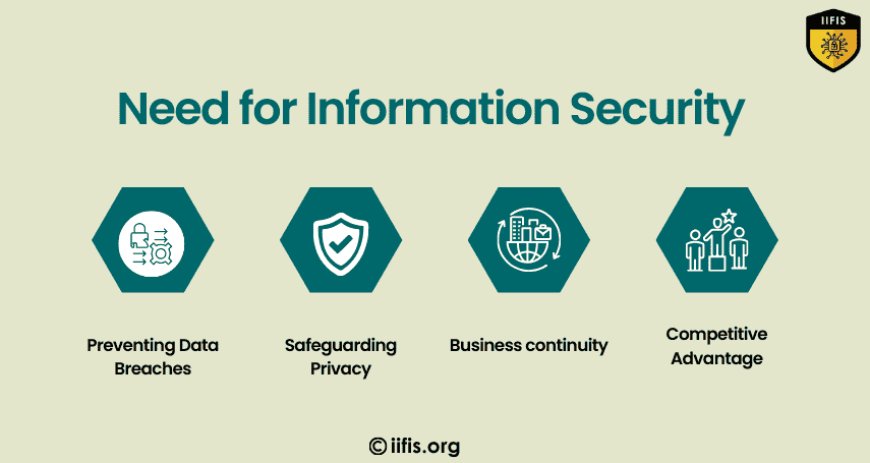
Certifications to Consider in Information Security
Certifications are essential for advancing in the field of information security. Here are some key certifications for various experience levels:
-
Certified Information Security Professional Level 1: An entry-level certification covering foundational security concepts like risk management, data protection, and network security. Ideal for newcomers to the field.
-
Certified Information Security Professional Level 2: An advanced certification for professionals with experience in security. It delves into topics like encryption techniques, incident response, and threat intelligence.
-
Certified Information Security Analyst (CISA): focuses on auditing, risk assessment, vulnerability management, and compliance. Perfect for security analysts and IT auditors.
-
Certified Information Security Expert (CISE): For experienced professionals, this certification covers advanced topics like penetration testing, ethical hacking, and advanced malware analysis. Ideal for those in leadership or expert cybersecurity roles.
Strong information security practices are crucial for any organization. With increasing cyber threats, robust models like the CIA Triad and Zero Trust are essential for protecting data. Gaining certifications has helped me stay ahead in this field, ensuring data security, trust, and business continuity in a digital world.


